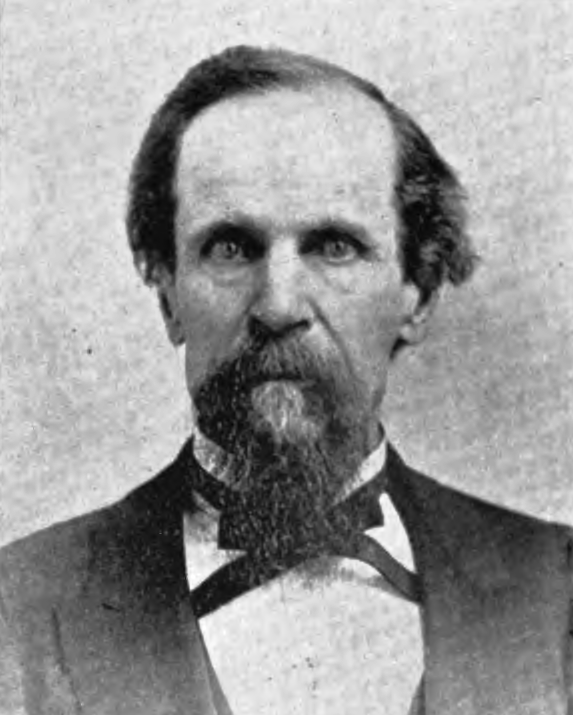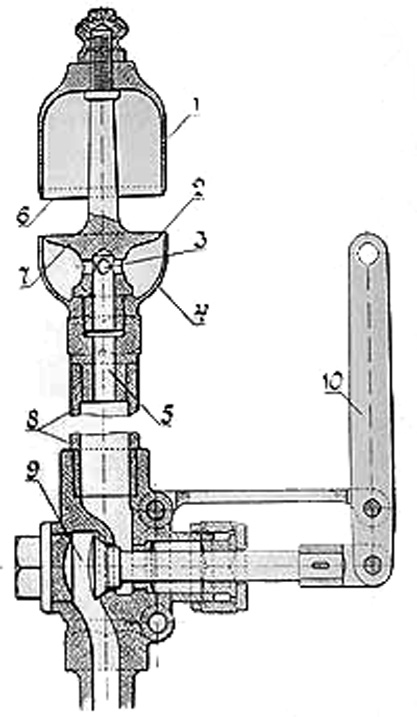|
Portland (sidewheeler 1853)
''Portland'' was a side wheel steamer built at Portland, Oregon in the summer of 1853. This vessel was chiefly remembered for its dramatic destruction in 1857 by being washed over Willamette Falls, an incident which killed its captain and a deckhand. The death of the captain, Arthur Jamieson, was one of at least four brothers, all steamboat officers, who were killed in three separate steamboating accidents occurring between 1857 and 1861 in Oregon and in British Columbia. Design, construction, and ownership ''Portland'' was a small sidewheeler, long, launched at Portland on July 2, 1853. Built by Alexander S. Murray and Jack Torrance, ''Portland'' was designed to run between Oregon City and Portland. The vessel was owned by Murray, Torrence, and Capt. Archibald Jamieson. Operations People's Line For a brief period starting in 1853 ''Portland'', under captain A.S. Murray, and ''Multnomah'', under Capt George W. Hoyt, were combined as the People's Line. This was the first m ... [...More Info...] [...Related Items...] OR: [Wikipedia] [Google] [Baidu] |
Multnomah (sidewheeler 1851)
The ''Multnomah'' was one of the first steamboats to operate on the Willamette and Yamhill rivers. This vessel should not be confused with the ''Multnomah'', a steamboat built in Portland, Oregon in 1885, which was larger and of a much different design. Design and construction The components of ''Multnomah'' were manufactured in the eastern United States, then shipped to Oregon City, Oregon around Cape Horn on the bark ''Success''. At that time, there were no locks at Willamette Falls, so it was important to determine whether a boat would be built above or below the falls. In the case of ''Multnomah'', the vessel was assembled at Canemah, a settlement above the falls. This allowed the vessel to run on the upper Willamette, running south from Canemah through the Willamette Valley. ''Multnomah''s hull was barrel-shaped, and held in shape with iron hoops which made caulking unnecessary. The ''Multnomah'' was a sidewheeler, as were all the boats operating in Oregon before 185 ... [...More Info...] [...Related Items...] OR: [Wikipedia] [Google] [Baidu] |
Jacob Kamm
Jacob Kamm (12 December 1823 – 16 December 1912) was a prominent early transportation businessman in Oregon, USA. Early life Kamm was born on 12 December 1823, in Canton of Glarus, Switzerland. His family migrated to America when he was 8 to Illinois, St. Louis and then New Orleans. He worked as a printer's devil beginning at age 12. A story repeated after Kamm's death was that a thief stole $12 from him in 1837, leading Kamm to work on a Mississippi steamer, the ''Ark'', as a cabin boy. Trained as an engineer on the Mississippi River, he was certified chief engineer with the St. Louis Association of Steamboat Engineers at age 25. In 1849, he moved west with the California Gold Rush, piloting the ''Blackhawk'', a steamer, on the Sacramento River. Oregon Kamm moved to Oregon in 1850 after being hired by the Milwaukie, Oregon founder Lot Whitcomb onto his ship, ''The Lot Whitcomb'', being the chief engineer on the Willamette River. ''The Lot Whitcomb'' was launched on 25 Dece ... [...More Info...] [...Related Items...] OR: [Wikipedia] [Google] [Baidu] |
British Columbia Historical Federation
The British Columbia Historical Federation encourages interest in the history of British Columbia through research, presentation, and support. The Federation provides a collective voice for its member societies. History The British Columbia Historical Association was established on October 12, 1922, and on March 2, 1927, the Association was registered under the Societies Act. It was renamed the British Columbia Historical Federation on July 29, 1983 — a name that better reflects its role as an umbrella organization for provincial historical societies. The Federation is a nonprofit organization registered as a charitable society under the Income Tax Act. Publications The British Columbia Historical Federation publishes a bi-monthly newsletter and articles on its website. Its quarterly magazine, ''British Columbia History'', is dedicated solely to the history of the province of British Columbia. In 1923 the British Columbia Historical Association published its ''First Annual Repo ... [...More Info...] [...Related Items...] OR: [Wikipedia] [Google] [Baidu] |
Victoria, British Columbia
Victoria is the capital city of the Canadian province of British Columbia, on the southern tip of Vancouver Island off Canada's Pacific coast. The city has a population of 91,867, and the Greater Victoria area has a population of 397,237. The city of Victoria is the 7th most densely populated city in Canada with . Victoria is the southernmost major city in Western Canada and is about southwest from British Columbia's largest city of Vancouver on the mainland. The city is about from Seattle by airplane, seaplane, ferry, or the Victoria Clipper passenger-only ferry, and from Port Angeles, Washington, by ferry across the Strait of Juan de Fuca. Named for Queen Victoria, the city is one of the oldest in the Pacific Northwest, with British settlement beginning in 1843. The city has retained a large number of its historic buildings, in particular its two most famous landmarks, the Parliament Buildings (finished in 1897 and home of the Legislative Assembly of British Columbia ... [...More Info...] [...Related Items...] OR: [Wikipedia] [Google] [Baidu] |
Scotland
Scotland (, ) is a country that is part of the United Kingdom. Covering the northern third of the island of Great Britain, mainland Scotland has a border with England to the southeast and is otherwise surrounded by the Atlantic Ocean to the north and west, the North Sea to the northeast and east, and the Irish Sea to the south. It also contains more than 790 islands, principally in the archipelagos of the Hebrides and the Northern Isles. Most of the population, including the capital Edinburgh, is concentrated in the Central Belt—the plain between the Scottish Highlands and the Southern Uplands—in the Scottish Lowlands. Scotland is divided into 32 administrative subdivisions or local authorities, known as council areas. Glasgow City is the largest council area in terms of population, with Highland being the largest in terms of area. Limited self-governing power, covering matters such as education, social services and roads and transportation, is devolved from the Scott ... [...More Info...] [...Related Items...] OR: [Wikipedia] [Google] [Baidu] |
Isle Of Arran
The Isle of Arran (; sco, Isle o Arran; gd, Eilean Arainn) or simply Arran is an island off the west coast of Scotland. It is the largest island in the Firth of Clyde and the seventh-largest Scottish island, at . Historically part of Buteshire, it is in the unitary council area of North Ayrshire. In the 2011 census it had a resident population of 4,629. Though culturally and physically similar to the Hebrides, it is separated from them by the Kintyre peninsula. Often referred to as "Scotland in Miniature", the island is divided into highland and lowland areas by the Highland Boundary Fault and has been described as a "geologist's paradise".Haswell-Smith (2004) pp. 11–17. Arran has been continuously inhabited since the early Neolithic period. Numerous prehistoric remains have been found. From the 6th century onwards, Goidelic-speaking peoples from Ireland colonised it and it became a centre of religious activity. In the troubled Viking Age, Arran became the property of t ... [...More Info...] [...Related Items...] OR: [Wikipedia] [Google] [Baidu] |
Compass
A compass is a device that shows the cardinal directions used for navigation and geographic orientation. It commonly consists of a magnetized needle or other element, such as a compass card or compass rose, which can pivot to align itself with magnetic north. Other methods may be used, including gyroscopes, magnetometers, and GPS receivers. Compasses often show angles in degrees: north corresponds to 0°, and the angles increase clockwise, so east is 90°, south is 180°, and west is 270°. These numbers allow the compass to show azimuths or bearings which are commonly stated in degrees. If local variation between magnetic north and true north is known, then direction of magnetic north also gives direction of true north. Among the Four Great Inventions, the magnetic compass was first invented as a device for divination as early as the Chinese Han Dynasty (since c. 206 BC),Li Shu-hua, p. 176 and later adopted for navigation by the Song Dynasty Chinese during the 11th centur ... [...More Info...] [...Related Items...] OR: [Wikipedia] [Google] [Baidu] |
Steam Whistle
A steam whistle is a device used to produce sound in the form of a whistle using live steam, which creates, projects, and amplifies its sound by acting as a vibrating system (compare to train horn). Operation The whistle consists of the following main parts, as seen on the drawing: the whistle bell (1), the steam orifice or aperture (2), and the valve (9). When the lever (10) is actuated (usually via a pull cord), the valve opens and lets the steam escape through the orifice. The steam will alternately compress and rarefy in the bell, creating the sound. The pitch, or tone, is dependent on the length of the bell; and also how far the operator has opened the valve. Some locomotive engineers invented their own distinctive style of whistling. Uses of steam whistles Steam whistles were often used in factories, and similar places to signal the start or end of a shift, etc. steam-powered railway locomotives, traction engines, and steam ships have traditionally been fitted wi ... [...More Info...] [...Related Items...] OR: [Wikipedia] [Google] [Baidu] |
Carpet Bag
A carpet bag is a top-opening travelling bag made of carpet, commonly from an oriental rug. It was a popular form of luggage in the United States and Europe in the 19th century, featuring simple handles and only an upper frame, which served as its closure. Some small modern versions are used as handbags or purses. The Reconstruction-era carpet bag illustrated is made from a remnant of Printed Tapestry Velvet Carpet (Whytock ; patent 1832, Edinburgh). Extant examples of this style of carpet can be seen at Hampton National Historic Site: National Park Service: Towson, Maryland, and Andrew Jacksons Hermitage in Nashville, Tennessee, USA. A United Kingdom extant installation can be seen at Burton Constable Hall, in Yorkshire. History The carpet bag was invented as a type of inexpensive personal baggage light enough for a passenger to carry, like a duffel bag, as opposed to a large rigid wooden or metal trunk, which required the assistance of porters. In 1886, the ''Scien ... [...More Info...] [...Related Items...] OR: [Wikipedia] [Google] [Baidu] |
Jennie Clark
''Jennie Clark'', also seen spelled ''Jenny Clark'', was the first sternwheel-driven steamboat to operate on the rivers of the Pacific Northwest, including British Columbia. This vessel was commonly known as the ''Jennie'' when it was in service. The design of the ''Jennie Clark'' set a pattern for all future sternwheel steamboats built in the Pacific Northwest and in British Columbia. Design and construction Jacob Kamm and John C. Ainsworth built ''Jennie Clark'' at Milwaukie, Oregon in 1855. ''Jennie Clark'' was the first sternwheeler built in the Pacific Northwest. The hull and upper works were built at Milwaukie, while her engines were built in Baltimore to Kamm's specifications, for a price of $1,663.16, and shipped around to the West Coast, which cost another $1,030.02. Kamm and Ainsworth had settled on the sternwheeler as superior to propeller-driven and side-wheel boats. Propellers were too vulnerable to expensive damage to propellers and shafts from rocks and othe ... [...More Info...] [...Related Items...] OR: [Wikipedia] [Google] [Baidu] |
George Anson Pease
George Anson Pease was a well-known steamboat captain in the Pacific Northwest region on the United States, who was active from the earliest days of steamboat navigation on the Willamette River in the 1850s. He worked in various roles until the early 1900s, commanding numerous vessels during that time. During a flood in 1861, while in command of the sternwheeler ''Onward'', Pease rescued 40 people from a flood in the area of Salem, Oregon. Family George Anson Pease was born at Stuyvesant Landing, Columbia County, New York State, on September 30, 1830. His father was Norman Pease (b. 1805; d. Jan 4, 1847, age 43), who was an architect and builder in New York State. His mother was Harriet McAllister, who moved to Oregon in 1862 from New York, and who died in 1890, at Oregon City, Oregon, at the age of 90 years. Pease, the oldest of the family, had six siblings, one of whom died in infancy. The others, all sisters, were: * Maria A. Pease, who married Alexander Warner; as of 190 ... [...More Info...] [...Related Items...] OR: [Wikipedia] [Google] [Baidu] |
Linn City, Oregon
Linn City was a community in Clackamas County, Oregon, United States, that existed from 1843-1861 and was destroyed in the Great Flood of 1862. The former site of Linn City was incorporated into the city of West Linn. History Robert Moore founded Robin's Nest in 1843, near the banks of the Willamette River. Originally, the town was platted on about of land. By 1845 the town had two log houses and a number of tents. Robin's Nest was renamed Linn City on December 22, 1845 in honor of Lewis F. Linn, a United States Senator from Missouri. Later, by 1846, the town's citizens had constructed fifteen homes. In addition, Linn City was home to a tavern, a chair manufacturer, a cabinet shop, a gunsmith shop, and a wagon shop. The town grows Over the next few years Linn City grew. In 1849 the town held a hotel and two general stores among its businesses. The same year, James Moore, Robert's son, built a lumber mill and a gristmill. The mills provided at least 20 jobs to the people of L ... [...More Info...] [...Related Items...] OR: [Wikipedia] [Google] [Baidu] |



_VICTORIA_FROM_JAMES'_BAY_LOOKING_UP_GOVERNMENT_STREET.jpg)


